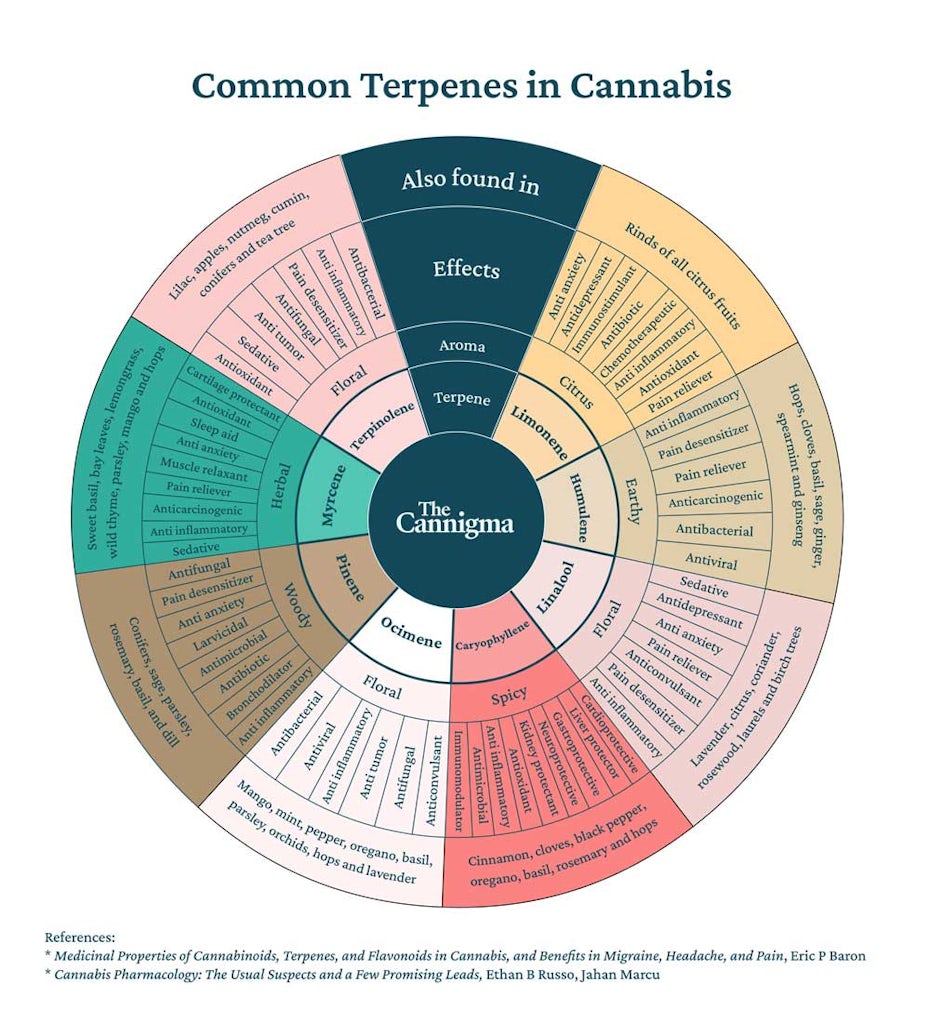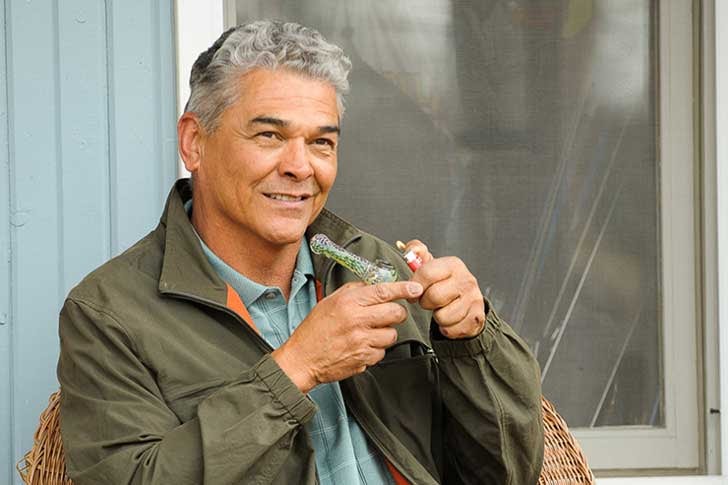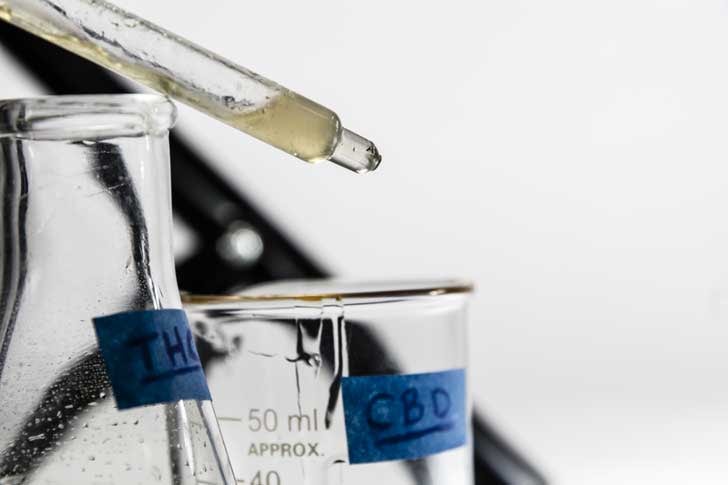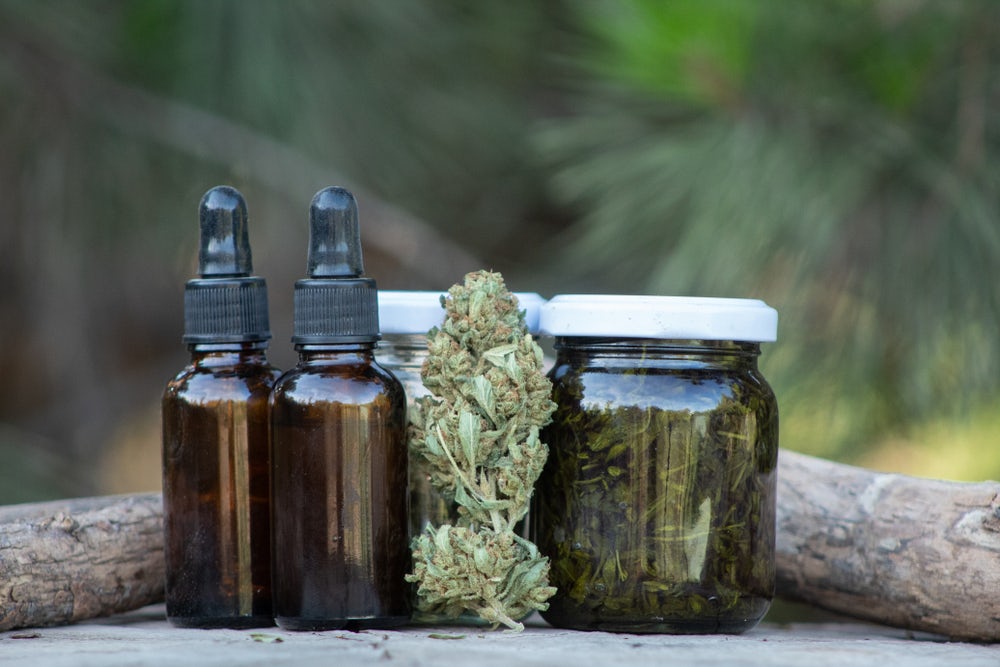Seniors enjoying cannabis? Don’t look so surprised.
Despite being in the early classes of the war on drugs, legalization has been good to people over 65. In fact, seniors are one of the fastest growing demographics of cannabis consumers, and the plant is uniquely positioned to help with certain challenges of aging. 1
Research on the effects of cannabis on aging is limited but definitely on the rise. Currently, most trials are in preclinical stages, although there have been human trials as well.
Of course, it’s not as simple as helping Grandma or Great-Uncle John light up a joint and be on their way. Certain types of cannabis are better suited for helping seniors than others. The best strain for each individual is subjective, but often the best strains for the elderly are Type II or Type III (balanced THC:CBD and high CBD chemovars, respectively) with a terpene profile that includes limonene, linalool, pinene, or myrcene.
For ease of reference, strain names are included in this article. But when looking for strains for seniors, you’re better off to focus less on the strain name and more on the chemical profile of the cannabis – first evaluating which cannabinoids are present and then considering the terpenes. This will give you the most in-depth insight into the effects of a strain.
Strains mentioned in this article include:
How cannabis can help seniors
Why would seniors reach for cannabis? Sure, it’s less addictive than some pharmaceutical drugs, with fewer side effects than most. But how does cannabis help seniors? 2
It comes down to the endocannabinoid system, which is part of every major biological function in the body, including aging. Endocannabinoid production naturally decreases throughout our lifetimes, so supplementing with phytocannabinoids can be beneficial as we age. 3
So which challenges of aging can cannabis address?
- Relief of aches and pain
- Insomnia
- Appetite stimulation
- Providing a boost of energy
- Improving cognition
Pain relief
- A 2016 study of 176 medical patients found that six months of regular cannabis use improved pain symptoms, reduced the severity of pain, and helped patients become more functional in their daily lives. 4
- A limited study on chronic neuropathic pain found that inhaled THC reduced pain by up to 45% in just 20 minutes. 5
Easing insomnia
- A randomized, double-blinded, crossover trial tested the safety and efficacy of sublingual cannabis dosing in 23 people with insomnia. Patients took either a placebo or a THC, CBD, and CBN, each for two weeks. The results showed patients reported reduced insomnia symptoms and time it took to fall asleep, while increasing total sleep time and feeling rested. In other words – the cannabinoid preparation worked. Side effects were described as mild, however the authors commented that the most concerning for the elderly population is the potential for dizziness and hallucinations. 6
- A 2017 review of research concluded that CBD may have “therapeutic potential” for people with insomnia at lower doses. The authors noted that while THC can decrease time to sleep, it can be damaging to sleep quality long term. The research around CBD and sleep is mixed and more research needs to be done to determine the utility for this condition. 7
Appetite stimulation
- A 2018 study found that THC can trigger the release of the hormone ghrelin, which is associated with hunger signals in the brain, while an earlier study identified changes in the hormone leptin as well as ghrelin to modify hunger signals. 8 9
- A 2020 double-blind human trial found that oral cannabis consumption increased ghrelin levels more than smoked or vaporized cannabis. 10
Boosting mood and energy
- Low doses of CBD can act as a “wake-promoting compound” though the mechanisms of this are still not well understood. 11
- CBD can encourage signaling in serotonin receptors in the brain as well as increase anandamide signaling. Both of these neurotransmitters help regulate moods and can make you feel happier. 12 13
Improving cognition
- In a 2021 review of the existing research, scientists found low to moderate doses of THC may improve cognition in elderly mice. However the researchers were not able to identify this effect in humans 14
- A 2021 study suggested cannabis use may improve cognition in older adults. In the study, older cannabis users showed increased brain connections in the anterior cerebellum, hippocampus, and parahippocampal regions of the brain when compared to non-cannabis users of the same age. These parts of the brain are involved in translation of the senses, learning, and memory recall, all of which deteriorate in old age. 15
How to choose cannabis for seniors
When it comes to finding the best cannabis strains for seniors, skip the indica/sativa divide and don’t get hung up on strain names. The most important factor for how a strain of cannabis will affect you is the chemovar. Cannabis chemovars categorize strains by their chemical makeup and dominant cannabinoid.
There are currently three cannabis chemotypes:
- Type I: High THC, low CBD
- Type II: Balanced THC and CBD
- Type III: High CBD and low THC
The best strains for seniors are Type II or Type III chemovars. Type II strains are best for dealing with chronic aches and pains and appetite stimulation, while Type III strains are better for energy and cognition.
Type I cannabis strains are typically not the first choice for most seniors, unless they are long-time consumers without significant cardiac conditions. A common side effect of THC is dizziness or lightheadedness, and this can be problematic for people who are already unsteady on their feet.
How you consume cannabis is just as important as the type of cannabis consumed. Different consumption methods bring on different types of highs on different timelines. If you can’t smoke for medical reasons (or just don’t want to), you can still consume cannabis orally or topically and have a variety of product options.
Issues with cannabis consumption in seniors

Cannabis is not a miracle drug and shouldn’t be used indiscriminately. While the plant can help older adults deal with complications, it can also bring additional health risks.
- Anyone with heart issues such as arrhythmia, or at an increased risk of heart attack should be aware of the risks of smoking cannabis. One of the most common side effects of THC is increased heart rate, which can lead to complications for people with heart issues.
- While dementia and Alzheimer’s are two areas of interest in cannabis research and treatment, people with these conditions should not be given just any cannabis. Consumption method and cannabinoid profile are two incredibly important factors when prescribing cannabis to people with neurodegenerative conditions, and should be done under the guidance and supervision of a medical professional.
- THC and CBD can interact with a number of different prescription medications and potentially have negative effects. Always talk with your doctor or a certified cannabis medical professional to discuss whether the interactions apply to you, and what symptoms to monitor. A trained medical professional can screen for drug interactions and counsel you on the risks and benefits accordingly.
Best terpenes for seniors
Best terpenes for relieving aches and pains
Limonene & humulene
- Limonene displayed the ability to reduce sensitivity to pain in a 2017 preclinical trial. 16
- Humulene taken orally or inhaled reduced allergic inflammation by decreasing the source of inflammatory mediators in the lungs in an experimental model. 17
- In a 2020 preclinical study, beta-caryophyllene demonstrated analgesic properties in pain due to inflammation. 18
Best terpenes for insomnia
Linalool & myrcene
- Linalool has well-documented anxiety-relieving and sedating effects, and is a popular choice in aromatherapy at spas for these reasons. 19
- Myrcene has a sedative and muscle relaxant effect that can be helpful for people who have trouble sleeping. 20
Best terpenes to improve cognition
Linalool & pinene
- A recent review of the effects of terpenes supported that linalool can improve learning and memory while preventing specific cognitive deficits. It also decreased certain clinical markers that are indicative of Alzheimer’s disease. 21
- Pinene inhibits the breakdown of the neurotransmitter acetylcholine, which affects memory, attention, and learning. Studies have shown that daily pinene use leads to increased attention spans, enhanced memory, and improved cognition and mood. 22 23 24
You can still benefit from the properties of terpenes even without cannabis. You can find pinene in any pine forest, linalool in lavender flowers, and limonene and myrcene in the skins of citrus fruits. You can also use essential oils to get these benefits.

Best strains for seniors
Best type II strains for seniors
Type II strains are best for seniors who are looking for relief from chronic pain, or to stimulate your appetite. The THC content in these strains is mediated by the CBD, but is still present in high enough quantities to deliver a “high” sensation. Look for a terpene profile with limonene, pinene, or humulene. Strains with this profile include Harmony Rose and ACDC.
Best type III strains for seniors
Type III strains are best for seniors who don’t enjoy being high, or are looking for help with cognition or a boost of energy. Look for a terpene profile that includes linalool, myrcene, or pinene. Strains with this profile include Harlequin and Ringo’s Gift.
Sources
- Lloyd, S. L., & Striley, C. W. (2018). Marijuana Use Among Adults 50 Years or Older in the 21st Century. Gerontology & geriatric medicine, 4, 2333721418781668. https://doi.org/10.1177/2333721418781668
- Kruger DJ, Kruger JS. Medical Cannabis Users’ Comparisons between Medical Cannabis and Mainstream Medicine. J Psychoactive Drugs. 2019;51(1):31-36. doi:10.1080/02791072.2018.1563314
- Bilkei-Gorzo A. (2012). The endocannabinoid system in normal and pathological brain ageing. Philosophical transactions of the Royal Society of London. Series B, Biological sciences, 367(1607), 3326–3341. https://doi.org/10.1098/rstb.2011.0388
- Haroutounian, Simon PhD,†; Ratz, Yael PharmD; Ginosar, Yehuda MD‡; Furmanov, Karina MSc§; Saifi, Fayez MD,‡; Meidan, Ronit RN; Davidson, Elyad MD*,‡ The Effect of Medicinal Cannabis on Pain and Quality-of-Life Outcomes in Chronic Pain, The Clinical Journal of Pain: December 2016 – Volume 32 – Issue 12 – p 1036-1043 doi: 10.1097/AJP.0000000000000364
- Elon Eisenberg, Miri Ogintz & Shlomo Almog (2014) The Pharmacokinetics, Efficacy, Safety, and Ease of Use of a Novel Portable Metered-Dose Cannabis Inhaler in Patients With Chronic Neuropathic Pain: A Phase 1a Study, Journal of Pain & Palliative Care Pharmacotherapy, 28:3, 216-225, DOI: 10.3109/15360288.2014.941130
- Walsh JH, Maddison KJ, Rankin T, Murray K, McArdle N, Ree MJ, Hillman DR, Eastwood PR. Treating insomnia symptoms with medicinal cannabis: a randomized, crossover trial of the efficacy of a cannabinoid medicine compared with placebo. Sleep. 2021 Nov 12;44(11):zsab149. doi: 10.1093/sleep/zsab149. PMID: 34115851; PMCID: PMC8598183.
- Babson KA, Sottile J, Morabito D. Cannabis, Cannabinoids, and Sleep: a Review of the Literature. Curr Psychiatry Rep. 2017 Apr;19(4):23. doi: 10.1007/s11920-017-0775-9. PMID: 28349316.
- Society for the Study of Ingestive Behavior. (2018, July 17). How cannabis affects appetite: Brain changes. ScienceDaily. Retrieved March 30, 22 www.sciencedaily.com/releases/2018/07/180717094747.htm
- Riggs PK, Vaida F, Rossi SS, Sorkin LS, Gouaux B, Grant I, Ellis RJ. A pilot study of the effects of cannabis on appetite hormones in HIV-infected adult men. Brain Res. 2012 Jan 11;1431:46-52. doi: 10.1016/j.brainres.2011.11.001. Epub 2011 Nov 7. PMID: 22133305; PMCID: PMC6200580.
- Farokhnia, M., McDiarmid, G.R., Newmeyer, M.N. et al. Effects of oral, smoked, and vaporized cannabis on endocrine pathways related to appetite and metabolism: a randomized, double-blind, placebo-controlled, human laboratory study. Transl Psychiatry 10, 71 (2020). https://doi.org/10.1038/s41398-020-0756-3
- Murillo-Rodríguez, E., Sarro-Ramírez, A., Sánchez, D., Mijangos-Moreno, S., Tejeda-Padrón, A., Poot-Aké, A., Guzmán, K., Pacheco-Pantoja, E., & Arias-Carrión, O. (2014). Potential effects of cannabidiol as a wake-promoting agent. Current neuropharmacology, 12(3), 269–272. https://doi.org/10.2174/1570159X11666131204235805
- Zanelati,C TV et al. Antidepressant-like effects of cannabidiol in mice: possible involvement of 5-HT1A receptors. 19 January 2010 https://doi.org/10.1111/j.1476-5381.2009.00521.x
- Blessing, E.M., Steenkamp, M.M., Manzanares, J. et al. Cannabidiol as a Potential Treatment for Anxiety Disorders. Neurotherapeutics 12, 825–836 (2015). https://doi.org/10.1007/s13311-015-0387-1
- Pocuca, N., Walter, T. J., Minassian, A., Young, J. W., Geyer, M. A., & Perry, W. (2021). The Effects of Cannabis Use on Cognitive Function in Healthy Aging: A Systematic Scoping Review. Archives of clinical neuropsychology : the official journal of the National Academy of Neuropsychologists, 36(5), 673–685. https://doi.org/10.1093/arclin/acaa105
- Watson, Karli K., et al. Cannabis Use and Resting State Functional Connectivity in the Aging Brain Frontiers in Aging Neuroscience V14 2022 https://www.frontiersin.org/article/10.3389/fnagi.2022.804890
- Araújo-Filho HG, Pereira EWM, Rezende MM, Menezes PP, Araújo AAS, Barreto RSS, Martins AOBPB, Albuquerque TR, Silva BAF, Alcantara IS, Coutinho HDM, Menezes IRA, Quintans-Júnior LJ, Quintans JSS. D-limonene exhibits superior antihyperalgesic effects in a β-cyclodextrin-complexed form in chronic musculoskeletal pain reducing Fos protein expression on spinal cord in mice. Neuroscience. 2017 Sep 1;358:158-169. doi: 10.1016/j.neuroscience.2017.06.037. Epub 2017 Jul 1. PMID: 28673718.
- Alexandre P. Rogerio,Edinéia L. Andrade,Daniela F.P. Leite,Cláudia P. Figueiredo,João B. Calixto. Preventive and therapeutic anti-inflammatory properties of the sesquiterpene α-humulene in experimental airways allergic inflammation 16 October 2009 https://doi.org/10.1111/j.1476-5381.2009.00177.x
- Ceccarelli I, Fiorenzani P, Pessina F, et al. The CB2 Agonist β-Caryophyllene in Male and Female Rats Exposed to a Model of Persistent Inflammatory Pain. Front Neurosci. 2020;14:850. Published 2020 Aug 18. doi:10.3389/fnins.2020.00850
- Linck VM, da Silva AL, Figueiró M, Piato AL, Herrmann AP, Dupont Birck F, Caramão EB, Nunes DS, Moreno PR, Elisabetsky E. Inhaled linalool-induced sedation in mice. Phytomedicine. 2009 Apr;16(4):303-7. doi: 10.1016/j.phymed.2008.08.001. Epub 2008 Sep 27. PMID: 18824339.
- T. Gurgel do Vale, E. Couto Furtado, J.G. Santos, G.S.B. Viana,Central effects of citral, myrcene and limonene, constituents of essential oil chemotypes from Lippia alba (Mill.) N.E. Brown, Phytomedicine, Volume 9, Issue 8, 2002,https://doi.org/10.1078/094471102321621304.
- Weston-Green Katrina, Clunas Helen, Jimenez Naranjo Carlos.A Review of the Potential Use of Pinene and Linalool as Terpene-Based Medicines for Brain Health: Discovering Novel Therapeutics in the Flavours and Fragrances of Cannabis. Frontiers in Psychiatry V12 2021 DOI 10.3389/fpsyt.2021.583211
- Dohi S, Terasaki M, Makino M. Acetylcholinesterase inhibitory activity and chemical composition of commercial essential oils. J Agric Food Chem. 2009 May 27;57(10):4313-8. doi: 10.1021/jf804013j. Epub 2009 Apr 9. PMID: 19358605.
- Dohi S, Terasaki M, Makino M. Acetylcholinesterase inhibitory activity and chemical composition of commercial essential oils. J Agric Food Chem. 2009 May 27;57(10):4313-8. doi: 10.1021/jf804013j. Epub 2009 Apr 9. PMID: 19358605.
- Salehi B, Upadhyay S, Erdogan Orhan I, Kumar Jugran A, L.D. Jayaweera S, A. Dias D, Sharopov F, Taheri Y, Martins N, Baghalpour N, C. Cho W, Sharifi-Rad J. Therapeutic Potential of α- and β-Pinene: A Miracle Gift of Nature. Biomolecules. 2019; 9(11):738. https://doi.org/10.3390/biom9110738
Sign up for bi-weekly updates, packed full of cannabis education, recipes, and tips. Your inbox will love it.

 Shop
Shop Support
Support



















